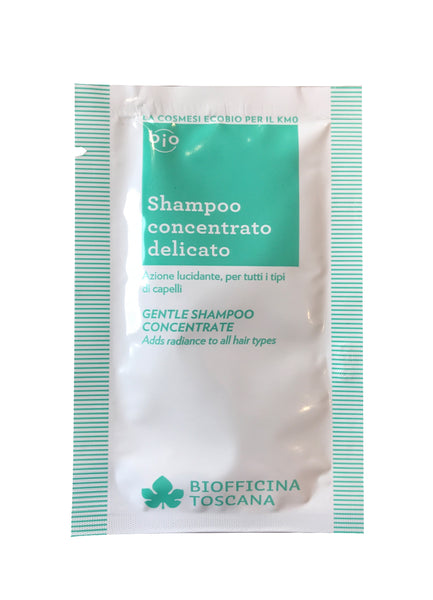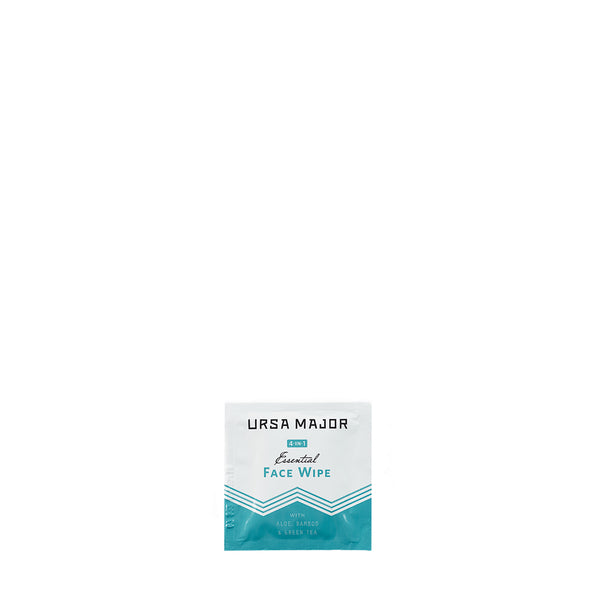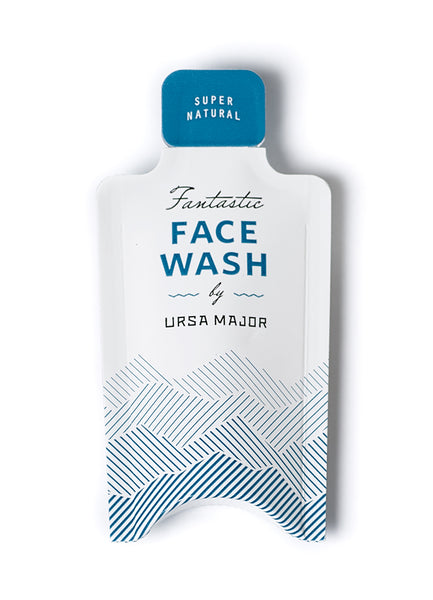Recent Articles

Fun fact: Marie-Véronique Nadeau used to be a chemistry teacher. And if you’ve read any of her posts on our blog, you may understand why we so often think, “Man, I wish she’d been my chemistry teacher.” Her ability to pepper platters of scientific explanations with comments like “Plus, zebrafish” and “Bwa ha ha” is a true gift.
So is the ability to formulate such a solid bench of knock-it-out-of-the-park winners, and one of the Marie Veronique lineup’s low-key heroes is the lightweight, relatively unassuming Soothing B3 Serum. We thought it was about time we dove into this formula, which highlights both niacinamide and hyaluronic acid. Here, find out why niacinamide is so incredibly cool — and why it hasn’t been talked about as much as its popular friends (Vitamin C and retinoids).
The short story: when applied to the skin, Niacinamide encourages processes that strengthen skin's barrier and help prevent wrinkling and sagging. It also helps to reduce hyperpigmentation and moderate photoimmune suppression. And it plays an essential role in ATP production, protecting and improving mitochondrial function (more on that here). Read on to get all the details..and to find out the real story on hyaluronic acid that TikTok videos are too short to reveal.
***
Dara: You’ve described Niacinamide, or Vitamin B3, as the next key ingredient you suggest including in a skincare regimen after “the big two” (retinoids and Vitamin C). Yet, as you’ve noted, it’s been a quiet player in the skincare landscape for many years. Why hasn’t it been more front and center, do you think? And why is it starting to come to the forefront now?
MARIE:
It’s interesting that niacin or Vitamin B3 is such a quiet player, especially when you consider its medical history. Barely 100 years ago, in 1927, it was finally recognized as a formidable medical weapon. Supplementation with B3, i.e. niacin, prevents and/or cures pellagra—a disease characterized by cutaneous lesions that used to be epidemic in parts of the South. Thanks to Vitamin B3, it has been wiped out. It’s one of my favorite skin stories—anyone who’s seen the absolutely horrific pictures of pellagra victims will know what I am talking about.
Now, virtually 100 years later, we’re discovering the other, and manifold, skin benefits this water-soluble vitamin can deliver when used topically. The topical factor changes the picture entirely: it doesn’t just prevent pellagra when taken orally, it is also a powerful skin remediation player when applied topically.
- In the age delay department, it upregulates both epidermal ceramide synthesis and cell synthesis in the dermis—both of which not only strengthen the stratum corneum, the protective barrier of the skin, but provide support for extra-cellular matrix activities which modulate wrinkling and sagging.
- In the protection department, it moderates photoimmune suppression, thus suppressing tumor generation.
- In the hyperpigmentation department, it suppresses epidermal melanosome transfer, resulting in a reduction of hyperpigmentation.
All these discoveries are quite recent, especially when compared to the pellagra story.
I suspect niacinamide is often used in skin care in the absence of discussion because so many of the mechanisms that explain its wide range of beneficial effects are complicated and, in most cases, not yet fully understood. The overarching theory is that because niacinamide is the precursor to NADH and NADPH, topical application of it works by regulating the balance between the two states of these co-enzymes, thus creating a state of homeostasis. While this by itself involves tracking extremely complicated pathways, the mechanisms occurring at the level of mDNA activity within the cell’s nucleus only add to the complexity. Research has surged forward dramatically with advances in electron microscopy, but at this point intracellular research is a new field and there’s much more we have to learn.
Fortunately, in skin care, we can use an active like niacinamide in advance of knowing the fine details of how it works at different levels of the skin. We formulators only need to be concerned about two things: we need to know that it does work, and we need to know how to deliver it into the skin so it can work. Science has the studies to show us it does work, so that means we can narrow our focus to the question of skin delivery.
Dara: You’ve mentioned on our blog before that niacinamide also works not just as an antioxidant but also plays an essential role in ATP production, which is related to the theory you mentioned about NADH and NADPH. This is exciting! Can you explain (for laypeople who are science enthusiasts) how that works, and the other ways in which it helps give aging skin a boost?
MARIE:
I don’t know how much you want to get into the details, but basically it’s electron trading going on between the co-enzyme nicotinamide adenine dinucleotide (NAD) and nicotinamide adenine dinucleotide phosphate (NADP). NAD+ is reduced to NADH, which serves as an energy storage unit. It gives up its high energy electrons to the mitochondrial electron transport chain as needed. “NADH and NADPH can be viewed as the fundamental energy ‘currency’ units within cells, driving the metabolism of cells involved in both catabolic and anabolic processes.” (1)
There’s a good article here that explains the process for the science enthusiast: https://www.researchgate.net/publication/286270242_A_Review_of_the_range_of_effects_of_niacinamide_in_human_skin/link/57601eef08ae2b8d20eb27ba/download
What’s most interesting about this from the aging skin point of view is that it is well-known that these nicotinamide coenzymes become depleted as we age. (This reduction is associated with cell senescence, another aging mechanism that deserves a very thorough discussion. In fact, the subject of cellular senescence is so complex I’ve devoted entire chapters to it in my new book, The Biology of Skin Aging, now in the editing phase. It is due to come out fairly soon).
Niacinamide enters the age delay picture in a significant way. Although senescent cells accumulate over time, niacinamide offers a way to retard the cumulative process. It does so, rather excitingly, by way of improving the health of, and extending the longevity of, individual cells. It appears that supplementation with niacinamide increases intracellular concentrations of NADPH. When niacinamide is delivered by a topical to cutaneous cells, even aged ones on their way to becoming senescent are capable of utilizing it to restore intracellular nicotinamide coenzyme homeostasis. This is a case of teaching an old dog new tricks, and you just have to cheer on success stories like that. We don’t want to teach our cells to roll over and play dead, heaven forbid—but with the help of niacinamide we can teach them other tricks, like jumping through hoops or fetching tennis balls.
Dara: That is incredibly cool and makes me want to slather myself with niacinamide immediately. But, to make sure we cover all of the “but what about…” questions, what do you think of reports that it can cause skin flushing?
MARIE:
Nicotinic acid, which is niacin, is well documented in terms of producing vasodilation. There really aren’t the same issues with niacinamide.
Dara: Great news. Continuing the fun “but what about…” game, I have another question that may lead us in a slightly different but related direction.
Soothing B3, your serum that highlights the power of niacinaminde, also contains a lot of sodium hyaluronate. Hyaluronic acid has been a skincare darling for quite some time, but we’ve heard whispers (mainly on TikTok) that it’s “bad” and can “suck all the moisture out of your face.” All of us at Ayla would love to have you comment on this.
MARIE:
If it’s on TikTok, we certainly need to be taking it seriously. We know how reliable their information is. So, okay, there’s actually a grain of truth in what they are saying—but note that glycerin is another humectant that will do the same thing, so someone should alert them to that issue so they can panic accordingly.
HA is a long-chain polysaccharide composed of alternating units of glucuronic acid and glucosamine. In other words, it’s a sugar, and as sugars are wont to do, it attracts moisture and hangs onto it. A molecule of HA holds up to 1,000x its weight in water. We biosynthesize HA, but starting at about age 30 we produce 1% less per year, so by middle age we have lost that plump, dewy skin we had as youngsters.
We can use HA as a humectant, and when we do, it works well to moisturize skin on the surface because it attracts and holds water. However, if your skin is dry and you’re in the desert with no oasis in sight, HA is not going to be your go-to moisturizer—because yes, in the absence of water from another source, it will take it from your own body. If the conditions described above apply, it would be a good idea to splash water on your skin if it’s feeling dry—then feel free to add your humectant with HA and glycerin or whatever and you’ll be fine. Whatever you can spare from your canteen, but save enough to drink.
Despite this rather obscure drawback, you can think of HA as a very valuable humectant. The bigger mistake people make about it is thinking that it will restore deeper layers of the skin and prevent wrinkles. By the use of more wishful thinking than logic, the story goes that HA will somehow penetrate into the dermis where it will form part of the ECM that holds up the fibers of the skin, thus preventing it from looking dry and wrinkled. Sorry, no. The HA we make on our own cannot be replaced by topical applications of HA. This doesn’t mean don’t use it, it means don’t expect miracles when you do. It’s just a humectant, albeit a very good one.
Dara: Thank you for humoring me and playing my little game. What else would you like everyone to know about Soothing B3?
MARIE:
We’re only beginning to discover how good niacinamide is—but consider it a good investment in your future. It’s definitely a big part of anyone’s age delay armamentarium. But for heaven’s sake, make sure the niacinamide is delivered in a way that your skin can actually utilize it to its fullest capacity. Soothing B3 has been formulated with special attention paid to stability, efficacy and deliverability. These are the big three in formulation, and whenever a very active ingredient, whether ascorbic acid or niacinamide, is involved, you face the challenge of balancing those three factors. A serum is the ideal solution because it penetrates well, thus resolving deliverability and efficacy challenges, and stability issues can be addressed with careful balancing of pH and taking other measures.
Bottom-line: a serum is your best bet at getting optimal results from an extraordinary active like B3. Vitamin powders (ascorbic acid, niacinamide) on the market are stable enough, and yes, you can use them as exfoliants, but that barely scratches the surface in terms of the many, many benefits a good delivery system of active ingredients, incorporated into a serum, will offer you.
**
Guess who also loves niacinamide? Pedro, the founder of TWELVE. Guess who else? Dara, who put it in the Sea Serum. B3 is where it's at.
About Marie: Marie-Veronique Nadeau founded Marie Veronique over 10 years ago and is a nationally recognized formulator and beauty expert. She collaborates with her daughter, Jay Nadeau, physicist and bio-medical engineer, to carefully choose each ingredient in her products to address the causes of aging at the source. Marie holds a BS in Math and Chemistry as well as an esthetics license from Paris Beauty College. She is a mother of two and a grandmother of one. When she is not developing cutting-edge skincare products, she can be found reading at her local library or foraging for mushrooms with her granddaughter.



















